Gujarat Wildlife & Bird Watching Tour
The Gujarat birding & Wildlife Tour takes you to the best birding & wildlife destinations in the West Indian state of Gujarat. Velavadar Park lies inland from the Gulf of Cambay on the West coast of India. Created for the conservation of the Blackbuck, Valavedar is a tiny 35sq kms but unique grassland ecosystem. Valavedar is of interest to birders because of the huge roost of about 2000 harriers, which is formed every winter. (Oct to early Feb). The dominant species is Montagu’s. Another rare sight ( June to Oct) is that of the lesser Florican, which migrate and settle here to breed in the grasslands. Birders can spot the Stoliczka’s Bushchat, Ashy- crowned sparrow lark, Rufous-tailed, and crested Larks, Desert and Variable wheatears, Southern Grey and Rufous–tailed Shrikes. Apart from the Harrier, other raptors to be seen could include Black-shouldered Kite, Shikara, and Short-toed Snake Eagle. Common Crane and other waders can be spotted on the Alag River. The park has more than 1,000 Black Buck that can be viewed on the open grassland from very close range. The wolf and the jackal are the main predators in the park. Other mammals likely to be seen are Bengal fox, Black–naped Hare, Indian Desert Gerbil, Jungle cat, and Nilgai. Your next destination is Gir, located in southern Gujarat. The main reason to visit Gir is to see the Asiatic Lion, in its natural habitat. Latest census reports have counted 107 lions at Gir. Gir comprises diverse habitats – open scrub country, dry deciduous and tropical thorn forest and an evergreen corridor along the riverside. More than 300 species of birds have been recorded. Changable Hawk, Crested serpent, and Bonneli’s Eagle, Black Ibis, Wooley-necked Stork, Rock Bush Quail, Painted Sand Grouse, Crested Tree Swift, Greater Rocket-tailed Drongo, Black headed Cuckooshrike, Asian Paradise-Flycather, Brown, Fish and Great Horned Owls; Pygmy Woodpecker, Black Headed Oriole and Indian Pitta are the chief attraction. The last destination is the Kathiawar Peninsula in Gujarat State. A large portion of this low-lying peninsula accumulates water and gets converted into a vast swamp during the monsoons. As it dries in the winter sun, it becomes a desert like expanse of dry silt, interspersed by lagoons and small islands with vegetation called “bets”. This is the Rann of Kutch. The South East portion of the Rann called the Little Rann, is open to tourists. This unique region is astonishingly rich in bird life; particularly in winter when millions of waterfowl, along with desert species, can be spotted. The entire 4950 sq kms of the Little Rann of Kutch, has been designated as the Indian Wild Ass Sanctuary, as it is home to the rare and endangered “khur” – The Indian Wild Ass; not found anywhere else in the world. In winter the Little Rann is host to a variety of birds – almost 300 species.
Day 1 : Arrive New Delhi (By flight)
On arrival at the New Delhi airport, you will be received by our representative who will transfer you to your hotel and assist you with the check in procedure. He will also handover and brief you on all travel related documents. Overnight stay is at the hotel.
Day 2 : Delhi - Ahmedabad - Dasada
Transfer to domestic airport, time to catch the flight for Ahmedabad, Arrive Ahmedabad by flight. then drive in the Little Rann of Kutch, en-route see Egyptian and griffon vultures could be seen and wetlands that are good for resident birds. falcon, shikra, blue throat, rosy starling, black ibis, white pelican, grey and pond heron, pied, common and white-throated kingfisher, and other birds come into the property. After lunch, depart for a drive in the Little Rann of Kutch, a sanctuary for the Indian wild ass. An ancient seabed turned by geological forces into saline desert plains, the Rann has grassy patches that offer good bird-watching. Crested and Sykes larks, Oriental skylark, bimaculated lark, greater short-toed lark, singing and Indian bushlarks, ashy-crowned and black-crowned sparrow-larks, are likely sightings and greater hoopoe lark is possible. Desert and variable wheatears, southern grey, long-tailed, rufous-tailed and bay-back shrike, common woodshrike are also likely sightings and the desert warbler is among the many winter visiting warblers. We will also look for chestnut-bellied and spotted sandgrouse, Indian courser (cream-coloured visits occasionally), quails, yellow-legged and barred buttonquails, grey francolin, wryneck, brown-rock chat, pied bushchat, rufous-tailed scrub robin, blue-headed rock thrush, black redstart and buntings in the scrubby areas. At sunset, it is possible to watch marsh, Montagu and pallid harriers, aquila eagles, falcons and buzzards heading for their roosting sites. Among the mammals of the Rann other than the wild ass, there are chances of seeing nilgai, chinkara gazelle, white-footed desert and Indian foxes, the wolf, overnight stay.
Day 3 : Dasada
Morning after breakfast, drive to the bets, elevated patches in the Rann covered with scrub and grass. In winter, this is a likely area for Macqueen's bustard. Long-legged, common and white-eyed buzzard, booted eagle, Bonelli's eagle. short-toed snake eagle, are often seen during the drive.
Evening visit to Nawa Talao, a lake where demoiselle and common cranes gather in large flocks during the winter months. Greater and lesser flamingo are seen in large numbers as are great white pelican with spot billed and dalmatian recorded. Painted, openbill, wooly-necked, white, black and black-necked stork could be seen as also black, glossy and black-headed ibis. Northern pintail, common teal, spot-billed duck, mallard, gadwall, wigeon, garganey, shoveler, cotton pygmy goose, pochards, tufted duck, lesser whistling duck, brahminy and comb duck are among the many visitors to the lake. Waders include pratincoles, lapwings, sandpipers, ruff and other birds in good numbers, overnight stay.
Day 4 : Dasada - Jamnagar
Morning after breakfast walk in Dasada village. This can yield a reasonably good bird list including yellow-legged green pigeon, paradise flycatcher, fantails, red-breasted flycatcher, white-eye, prinias and warblers. After breakfast, depart for Jamnagar, six hours away. This is an interesting route passing agricultural fields and lakes. Birds of open-country like roller and black-shouldered kite could be seen. Arrive at Hotel President in time for lunch. On this day, we will also try to get permits to enter the Marine National Park the next day. Evening visit to Khijadiya Bird Sanctuary, where there are fairly good chances of seeing Indian skimmer. This sanctuary is a breeding area for many species of birds that do not nest elsewhere in peninsular India. Great-crested grebe, black-necked stork, Caspian tern and many other birds can be seen besides most of the species recorded in the Little Rann area. Overnight stay at the hotel.
Day 5 : Jamnagar
Morning after breakfast Visit coastal areas along the Gulf of Kutch, one of the finest birding stretches along the Indian coastline. see crab-plover, Kentish plover, oystercatcher, ruddy turnstone, broad-billed sandpiper, sanderling, dunlin, curlew sandpiper, black-headed gull, Pallas's gull, Temminck's stint, lesser-crested tern, gull-billed tern, common tern, little tern, black-bellied tern, whiskered tern, whiskered tern, darters, western reef egret and other birds could be seen on this route. Overnight stay at the hotel.
Day 6 : Jamnagar - Gir National Park
Morning after breakfast, Depart for Porbandar, This coastal city is good for watching and photographing birds at close range. Besides large flamingo and crane flocks, this area also receives yellow-legged gull, heuglin's gull, sandwich tern, black-bellied tern, etc. Overnight stay at the hotel.
Day 7 : Gir Bird Watching Tours in Gujarat
Morning afternoon jungle safari to the national park. Wildlife in Gir: Here population of panther (leopard), sambar, chital (spotted deer), nilgai (blue bull antelope) and wild boar. Gir is also one of the major habitats of chousingha (the world's only four-horned antelope) and chinkara (Indian gazelle) that are hard to spot in the teak forests along the game drive trails. Among the many birds of Gir, changeable hawk eagle, crested serpent eagle, Bonelli's eagle, Peregrine falcon, laggar falcon, shikra, painted sandgrouse, quails, black-hooded and golden oriole, marshall's and common iora, Asian paradise flycatcher, tickell's blue, red-throated, verditer and Asian brown flycatchers, yellow-crowned, brown-capped pygmy, black-rumped flameback woodpeckers, green and blue-cheeked bee-eaters, coppersmith barbet, common, lesser pied and white-throated kingfisher, blossom-headed parakeet, hoopoe, black, ashy and white-bellied drongos, rufous treepie, large cuckoo shrike, small minivet, red-vented and white-eared bulbul, tawny-bellied, yellow-eyed, jungle and large grey babblers, grey-breasted, ashy, rufous-fronted, plain, jungle and graceful prinias, zitting cisticola, clamorous reed-warbler, booted warbler, greenish warbler, lesser and Hume's warbler, orphean warbler and blyth's reed warbler, are among the many birds that could be seen here. overnight stay at resort.
Day 8 : Gir - Bhavnagar
Morning after breakfast, drive to Bhavnagar, on arrival check in at the hotel, then visit Bird in Victoria Park (good scrubland birdlife), Gaurishankar Lake and near the ports where Western reef egret nest in good numbers.
Day 9 :Bhavnagar - Velavadar - Ahmedabad
Early morning with packed breakfast, depart for Velavadar National Park, Known for its large blackbuck antelope population, Velavadar is also one of the few places where the wolf is proliferating in India though they are rarely seen in the daylight. Jackal, jungle cat and hare are more easily seen and Indian fox on the periphery. Sirkeer malkoha, painted francolin, chestnut-bellied and spotted sandgrouse, rufous-tailed, crested and Sykes larks, red-rumped swallows, desert and variable wheatears and other birds are seen and many raptors visit specially short-toed snake eagle, imperial, steppe, tawny, greater and lesser spotted eagles, Laggar falcon, hobby, common kestrel, red-necked falcon, peregrine falcon, white-eyed and long-legged buzzard, black-shouldered kite, Shikra, Eurasian sparrow-hawk and occasionally northern goshawk. Rarities include the Stoilczka's bushchat. overnight stay at the hotel.
Day 10 : Ahmedabad - Delhi - Departure
Morning after breakfast, transfer to airport time to catch the flight for Delhi, on arrival Delhi meet our representative and transfer to International airport time to catch the flight for onward destination.
Contact customer care for pricing at info@tigerjourney.in or give a call on +91 9630507774
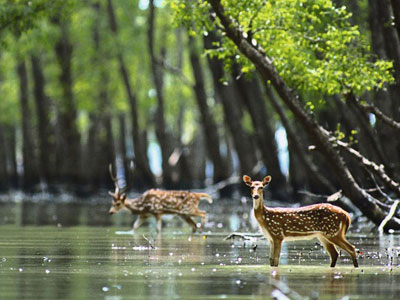
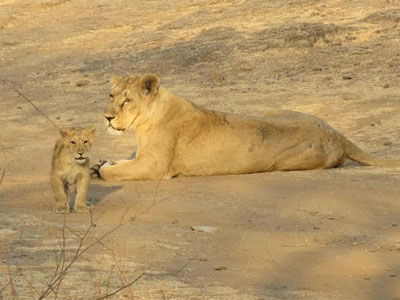
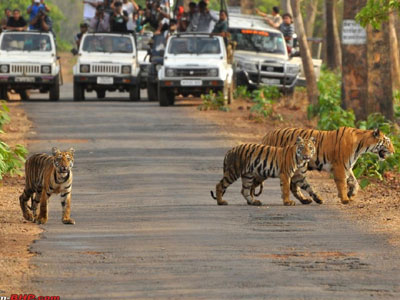
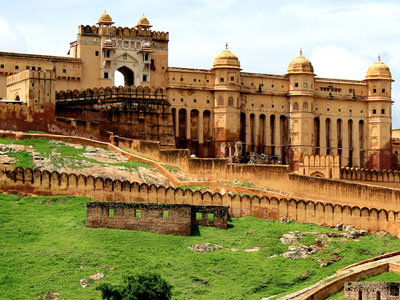
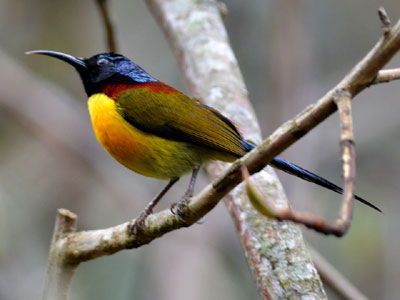
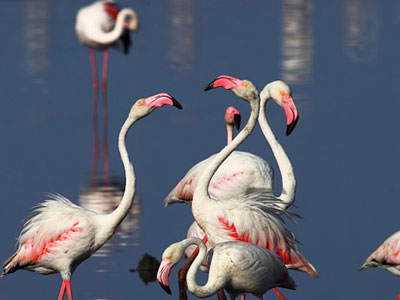
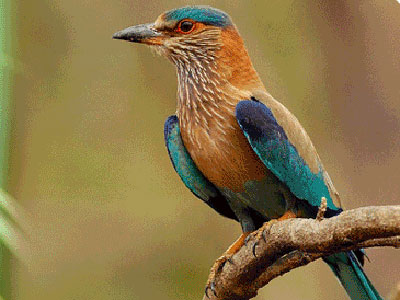
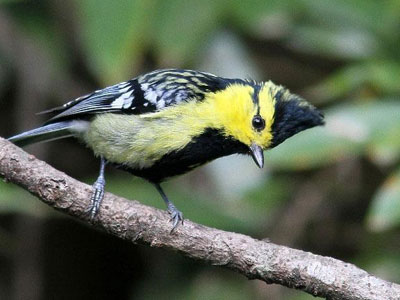
Important Notes
- Bandhavgarh, Pench & Kanha National Parks are closed for afternoon safaris on Wednesdays.
- Tiger Journey reserves the right to change the hotels, lodges to similar category in case of no availability.
- Tiger Journey reserves the right to reroute the itinerary in case of non-availability of Flight/ Train tickets or other reasons of similar nature.
- Park fees may change without prior notice. This is beyond our control and any increase levied will be passed onto you.
- There are limited safari vehicles allowed to enter in the national parks and are most difficult to book at a short notice. Please book your tour much in advance.
- The published price is not applicable during the Christmas and the New Year period.
- Check-in and check-out time at all hotels is 12 noon unless otherwise specified.
Tours
National Parks
Explore

Post - Tala, Bandhavgarh National Park, District - Umaria, Madhya Pradesh, Pin code - 484664
+91 9630507774, +91 9340711175Email : info@tigerjourney.in
© 2020 All Rights Reserved






